

 The Accurate Reloading Forums
The Accurate Reloading Forums  THE ACCURATE RELOADING.COM FORUMS
THE ACCURATE RELOADING.COM FORUMS  Guns, Politics, Gunsmithing & Reloading
Guns, Politics, Gunsmithing & Reloading  Gunsmithing
Gunsmithing  Some new color case work
Some new color case workGo  | New  | Find  | Notify  | Tools  | Reply  |  |
| One of Us |
Some projects done over the weekend. Hope you enjoy 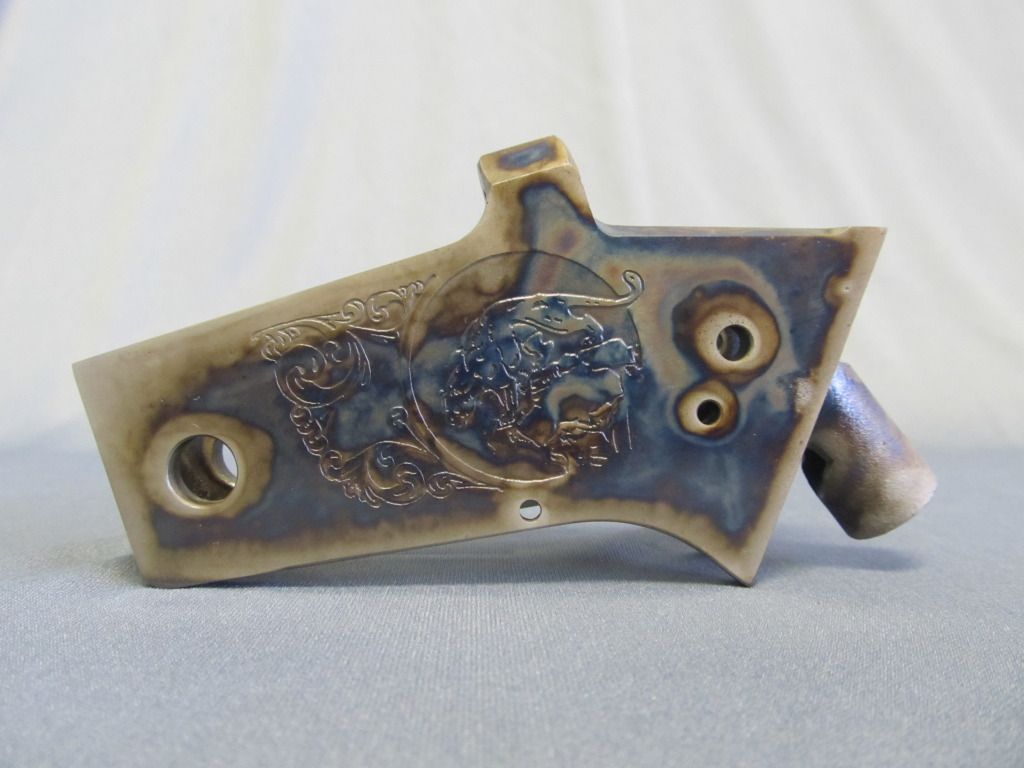 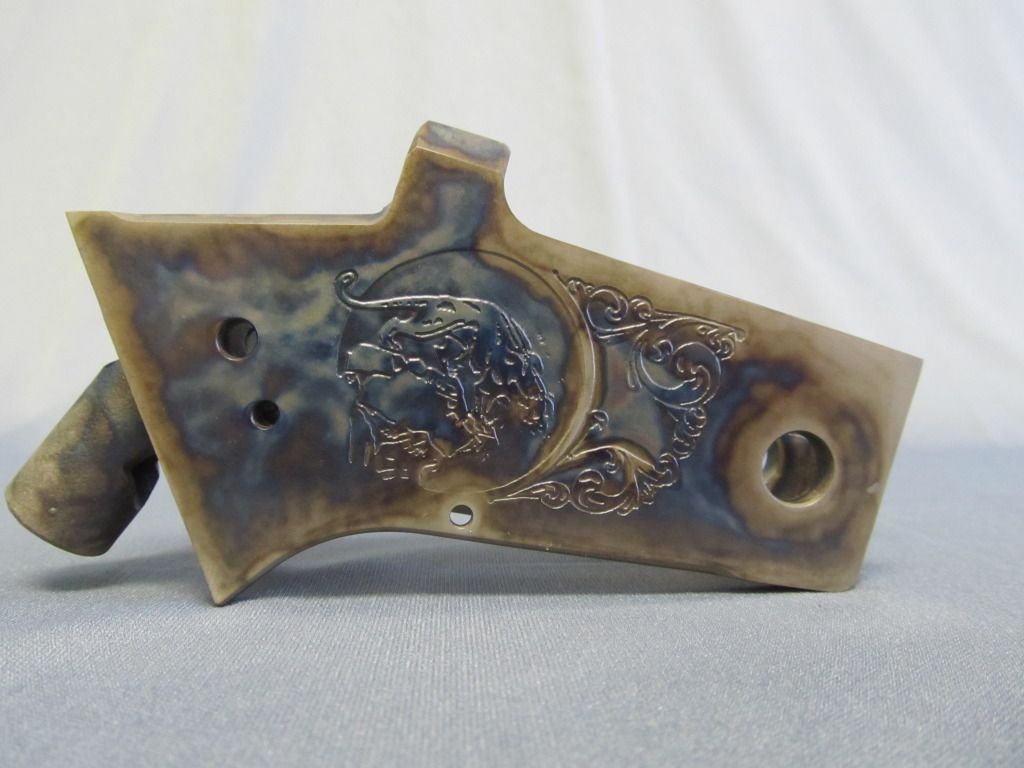 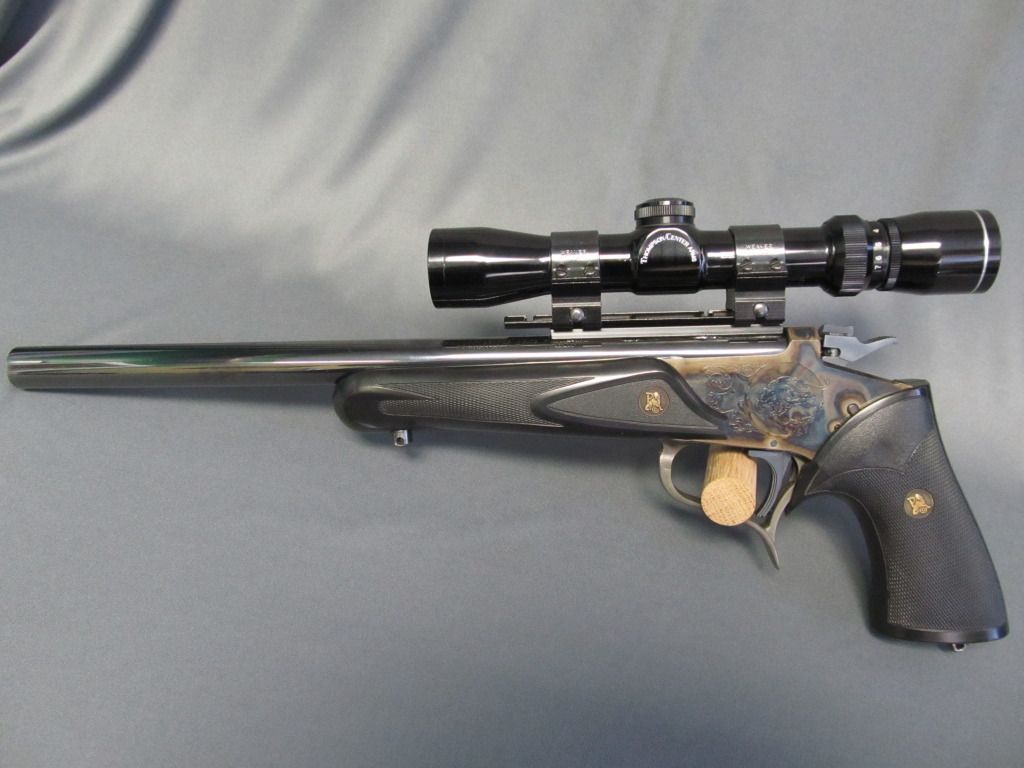 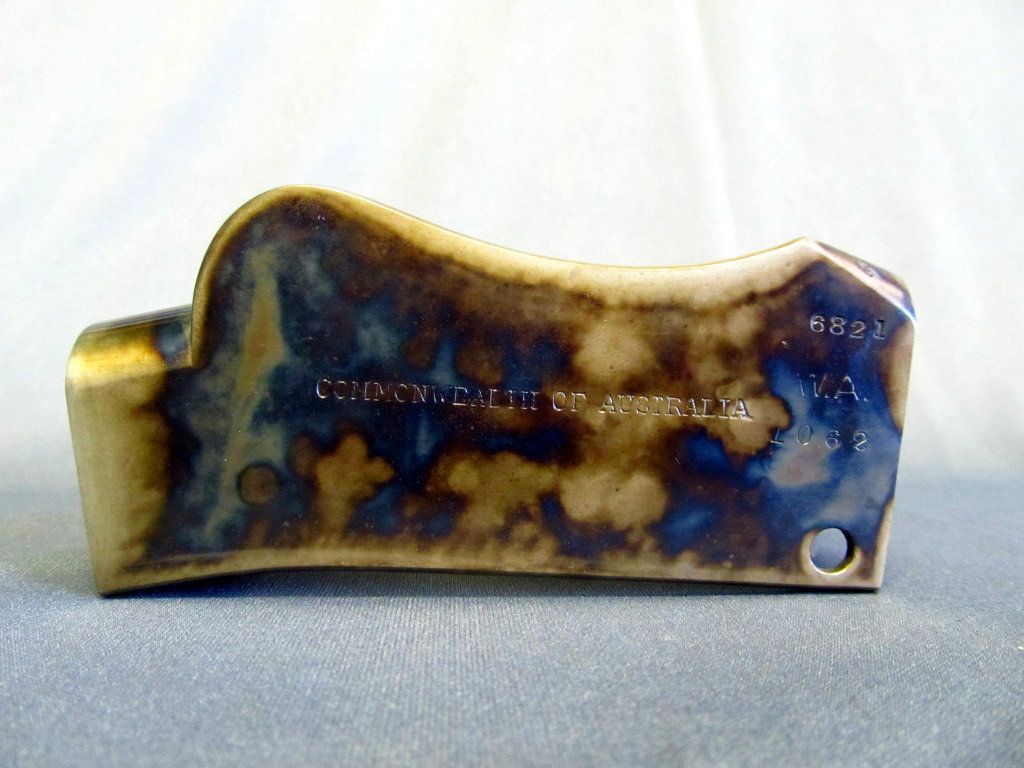 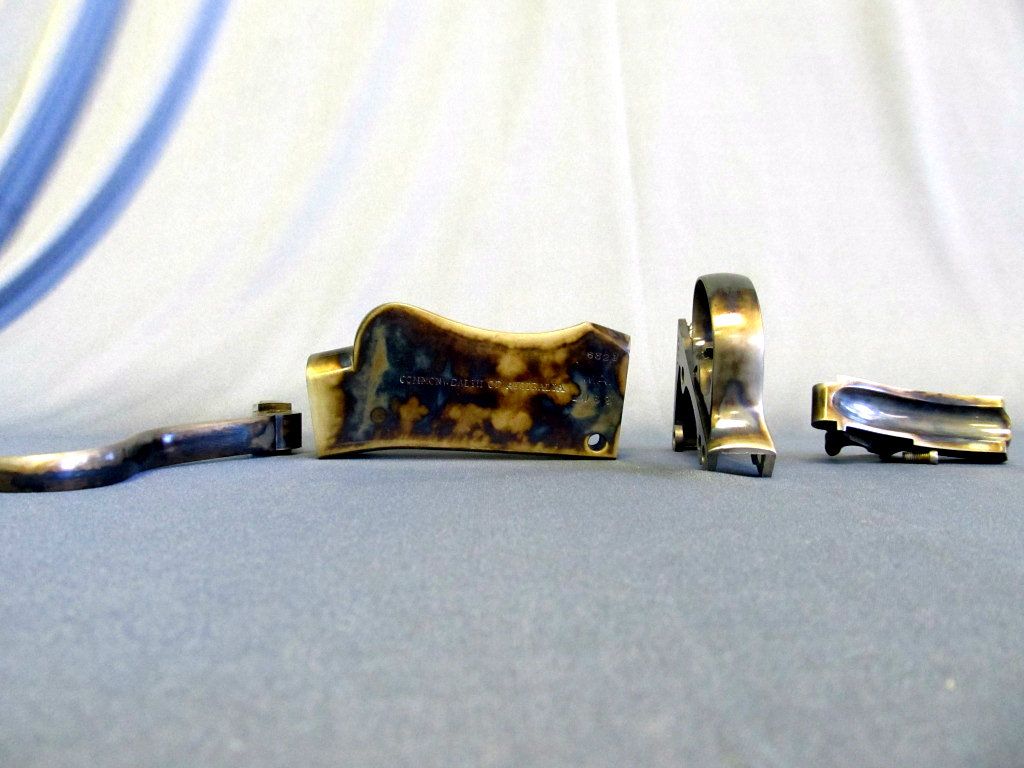 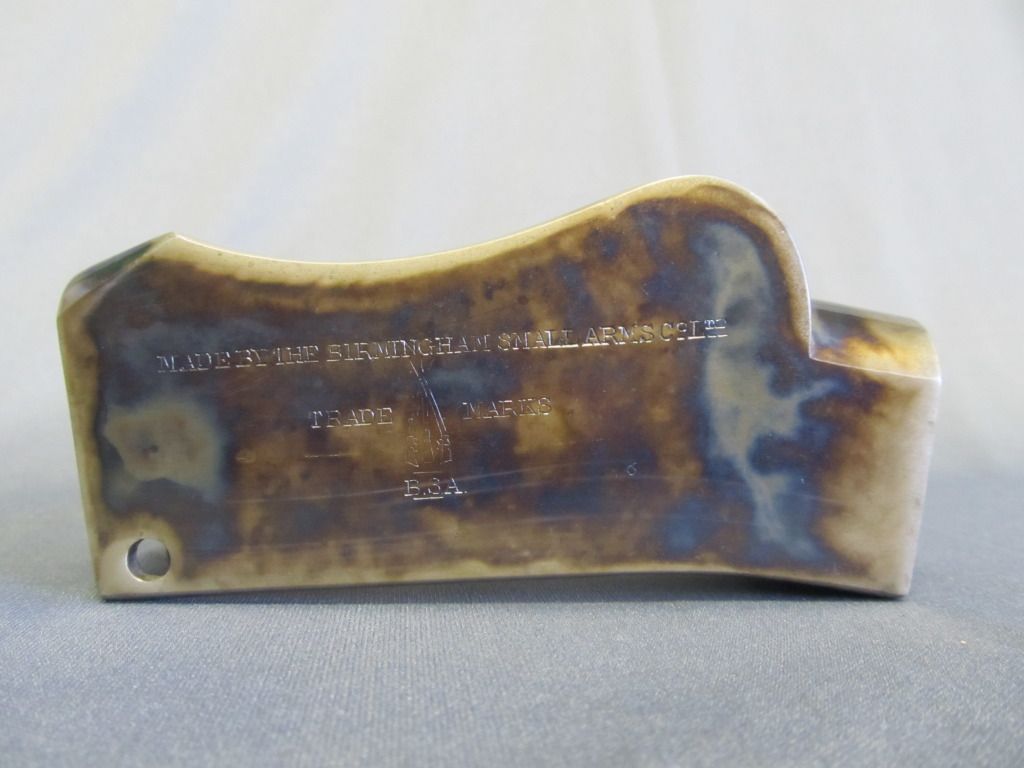 Michael J | ||
|
| One of Us |
I would have to sat that is perfect. At least for my taste. www.KLStottlemyer.com Deport the Homeless and Give the Illegals citizenship. AT LEAST THE ILLEGALS WILL WORK | |||
|
| one of us |
I took a class on color case hardening a few years back. We were taught to restrict our color case hardening to receivers of low carbon content. The instructor warned us that when heating alloy steel receivers of high carbon content for example 4140 and 4130 to the range of 1200 to 1400 degrees farenheight and quenching in water would cause the core of the receiver to be much too hard and possibly brittle. I was wondering what grade of steel was used by Thompson Center for their Contender receivers. Is there a tempering process used after hardening to address these issues now? Not trying to be critical here. Just trying to get information regarding this matter. Craftsman | |||
|
| One of Us |
Awesome. Love the colour on the BSA Cadet action. Very "english", well done. Previously 500N with many thousands of posts ! | |||
|
| one of us |
My Lone Star Rifle has beautiful Turnbull color case and is made of 8620. I think that's what is generally used for that type of work. | |||
|
| One of Us |
Just to jump in here; Craftsman you are right about 4140, but they don't heat it to 1400 like you can 8620; it is too easy to make it through hard and brittle. I have some modern pieces that Turnbull did, made from 4140 and they are not hard at all but have extreme coloration. Looks like very nice CCH here. | |||
|
| one of us |
dpcd I probably was not specific enough here. Some high carbon alloy steel can be affected by temperatures as low as 700 degrees f. I dont think you would get any color at 700. I'm wondering if you could bring high carbon alloys up to ideal case color temperatures, quech to maximum hardness, then oven temper at prescribed temperature to bring the alloy down to desired brinel hardness with out affecting the colors. Also I'm wondering if anyone knows the exact alloy used by Thompson Center for their Contender receivers. I'm thinking either 4140 or 4130, but I have nothing to confirm it. Craftsman | |||
|
| one of us |
If it was 4140 you would have to temper to about 700F to get into the low 40s HRc.I'm sure you would alter the colors greatly. | |||
|
| One of Us |
Re: Craftsman, et al... It's true that the hardening of any steel, low or high carbon, can make it brittle, as color case hardening is essentially just adding more carbon, and the higher the carbon content, the more brittle the steel will become. And that's something very important to gunsmiths, especially on receivers and other parts that will take great stress. However, through proper metal preparation (annealing correctly, etc.), cooking temperatures, and quench situations, the proper hardness can be achieved while avoiding brittleness and providing good color. Each of our pieces that is colored is hardness tested and we make sure that each is of the appropriate hardness. Also, remember that the "case" of color case hardening is only 0.003" - 0.005" deep, with the "core" or center of the steel still retaining it's softness and elasticity (read: not-brittleness), which is another point that makes it desirable for firearms. One would have to deal with extreme temperatures or very long periods of time to harden completely through a receiver that usually has 0.1+" material. Plus, it'd drastically change the color present if such were to happen. I assure you that neither happens here. Please let me know if you have any other questions. I'll be happy to answer what I can. Michael J | |||
|
| one of us |
Michaelj, I guess Craftsman and myself have been down here too long in the heat so we have a hard time understanding your explaination. If I understand the answer is that you are adding carbon without reaching the point above 1200 degrees. Maybe they are teaching a little different at the schools now. Tell us how you draw the temper back to normal for the strength required to hold all the pressure of modern cartridges. I don't understand the alloy steels being color harden. | |||
|
| One of Us |
Les, First off I bet the heat is really unbearable and I am glad not to be in it. The thing that I think maybe I am not getting across and please understand I am no metallurgy expert this is just from my understanding and my experiences is that the case hardening aspect of this is that the hardening depth is 3 to 5 thousandths and we color and harden only after annealing if we were to harden without annealing I believe all of our worst fears would be realized and none of us needs that. We have cut and tested some samples and we stay in the mid to low forties Rockwell. As for a Martini at above 55,000 psi personally that is a little to hot for me either way. Once again I am only going from my experience and the results I have achieved. I like having all my digits and I feel confident in my results. But as to adding color without the high temperatures I certainly don't know how to accomplish that. We anneal first and then color. I hope this answers some of your concerns and thank you for the discussion I always welcome questions and will always try and answer as best as my ability allows. Michael J | |||
|
| one of us |
You have to get above the critical temperature of steel which is 1450 F or more .The higher the temperature the faster and deeper the case will be.To get just a few thousandths it's fairly quick. The annealing is most likely done to prevent warping when hardening .In that case you couild also do a 'sub-critical anneal' or stress relief at 1200 F. They wouldn't let me in the metallurgy class at CST , I knew too much about it ! | |||
|
| one of us |
Michaelj First of all the colors you are getting on all your work is extremely good. Anyone who has dabled in color case hardening knows there is a learning curve to get to the point that your work looks this good. Also the Martini Cadet actions are of low carbon content and considered safe for color case hardening. The large Martini actions are also good ones for color case hardening. Les I agree, this Texas heat must be the reason our calculations dont always come out the same as others. In summary, all that I have studied under have cautioned us to avoid working with high carbon alloy steels such as 4130 and 4140. Due to the fact that the temperatures you would be working with is at or near critical hardening temperatures for high carbon alloys. Thus running the risk of fully hardening the core of the receiver when quenched in water. Depth of case hardness would be irrelavant. Again I am not being critical, just trying to learn if there has been a process developed recently that would give us some confidence that the core of high carbon receivers would not be rendered too hard. Possibly the annealing step first you mentioned is the key. Perhaps Thompson Center used something like 8620 steel in their Contender receivers? That would be safe to color case harden. Does anyone know what type of steel was used? Craftsman | |||
|
| One of Us |
To case harden alloy steel, a post hardening step would be needed. Annealing prior to case hardening would just help with warping. Particularly if you did some welding on the part. The temps for case hardening will also through harden as has been noted. After the quench, you would need to reheat to about 400-450F for something like an hour or longer to temper it back to specification. Exact times are not easy to determine without some experimentation. The major issue is that 400F will destroy your colors unless you have a controlled atmosphere furnace. They might fade even if you do. Around 400F the whole thing will turn a straw color as it forms new surface oxide. Like some knife and tool makers flame temper blades to a specific color. Testing the hardness would also be difficult since you now have a very hard case, and a similarly hard core. I haven't a clue what TC made their frames out of, but I enjoy mine quite a bit. Jeremy | |||
|
| Powered by Social Strata |
| Please Wait. Your request is being processed... |
|

Visit our on-line store for AR Memorabilia

